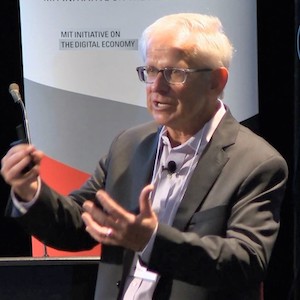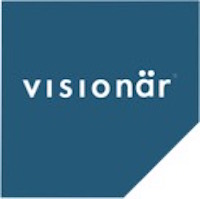 In a great post, "Doctor as Designer" Joyce Lee laments the "sad state of product and design in healthcare," and asks "when will device and drug companies create user-centered innovations that actually improve the lives of patients instead of their bottom line?" I heartily agree with Dr. Lee's point, and think the question can be extended to the rest of the health care system. Dr. Lee uses two examples to compare health care to consumer goods. Heinz took a product design -- the glass ketchup bottle -- that had been around for over a hundred years, and greatly improved the user experience by changing to a squeezable "upside down" bottle. This not only kept the ketchup from concentrating at the bottom but also avoided the need to hold the bottle at a special angle or to tap at a particular spot just to get the ketchup out...
In a great post, "Doctor as Designer" Joyce Lee laments the "sad state of product and design in healthcare," and asks "when will device and drug companies create user-centered innovations that actually improve the lives of patients instead of their bottom line?" I heartily agree with Dr. Lee's point, and think the question can be extended to the rest of the health care system. Dr. Lee uses two examples to compare health care to consumer goods. Heinz took a product design -- the glass ketchup bottle -- that had been around for over a hundred years, and greatly improved the user experience by changing to a squeezable "upside down" bottle. This not only kept the ketchup from concentrating at the bottom but also avoided the need to hold the bottle at a special angle or to tap at a particular spot just to get the ketchup out...
 This year at HIMSS in Las Vegas there was no shortage of talk about the “lack of usability” in EHRs. In the final HIMSS16 show daily (Thursday March 3, 2016) there were four articles (“When EHRs cause Harm,” “5 UX steps to Healthy Clinical apps,” “Nurse: We face severe IT usability problems,” and “The leading health IT issues? Poor usability and missing safeguards”) that addressed some aspect of EHR usability...Over the past few years we’ve worked with a number of EHR vendors on improving the usability of their solutions. We’ve noticed a number of items that seem to common to many of the systems, and this list contains some of the most common and highest priority usability issues that should be avoided in your EHR designs.
This year at HIMSS in Las Vegas there was no shortage of talk about the “lack of usability” in EHRs. In the final HIMSS16 show daily (Thursday March 3, 2016) there were four articles (“When EHRs cause Harm,” “5 UX steps to Healthy Clinical apps,” “Nurse: We face severe IT usability problems,” and “The leading health IT issues? Poor usability and missing safeguards”) that addressed some aspect of EHR usability...Over the past few years we’ve worked with a number of EHR vendors on improving the usability of their solutions. We’ve noticed a number of items that seem to common to many of the systems, and this list contains some of the most common and highest priority usability issues that should be avoided in your EHR designs.
 Not long ago, I was speaking at the National Association of Government Web Professionals. At the same conference, Mark Headd was speaking. We were speaking on different open data topics. My discussion was about the difference between open government and open data and his talk was about API [First]. Luckily they had us scheduled at different times, so I had the opportunity to see him speak on the API [First] strategy for website development using open data. His subtitle was "Open Data as a Foundation for Better Websites"...
Not long ago, I was speaking at the National Association of Government Web Professionals. At the same conference, Mark Headd was speaking. We were speaking on different open data topics. My discussion was about the difference between open government and open data and his talk was about API [First]. Luckily they had us scheduled at different times, so I had the opportunity to see him speak on the API [First] strategy for website development using open data. His subtitle was "Open Data as a Foundation for Better Websites"...
 Each year, my favorite open source software survey asks "Where is the future of open source taking us?" I like to try to think far into the future. Not next year or the next five, but where can the horizon of open source and its unique mix of collaborative ideals and communal practices take us? One such "out there" aspect of open source, that I think will eventually come to fruition, is that of UX. When I talk of UX, I mean User eXperience. It is a parent or superset of UI, the User Interface, or what we see. UX handles so much more than UI. The entire session that a human has with a system or piece of software is considered in UX...
Each year, my favorite open source software survey asks "Where is the future of open source taking us?" I like to try to think far into the future. Not next year or the next five, but where can the horizon of open source and its unique mix of collaborative ideals and communal practices take us? One such "out there" aspect of open source, that I think will eventually come to fruition, is that of UX. When I talk of UX, I mean User eXperience. It is a parent or superset of UI, the User Interface, or what we see. UX handles so much more than UI. The entire session that a human has with a system or piece of software is considered in UX... The “Goldilocks and the Three Bears” story begins with a girl tasting porridge. The first bowl is too hot, the second is too cold, and the third is “just right.” This article considers mobile device security for government and organizations. The theme is trade-offs between the usability of a mobile device and security for confidential organizational data such as conversations, messages, documents, images, and locations. The security, confidentiality, and integrity of communication are key. However, if the usability of mobile devices for end-users, administrators, and organizations is too challenging, then the availability of the data for productive work is lost.
The “Goldilocks and the Three Bears” story begins with a girl tasting porridge. The first bowl is too hot, the second is too cold, and the third is “just right.” This article considers mobile device security for government and organizations. The theme is trade-offs between the usability of a mobile device and security for confidential organizational data such as conversations, messages, documents, images, and locations. The security, confidentiality, and integrity of communication are key. However, if the usability of mobile devices for end-users, administrators, and organizations is too challenging, then the availability of the data for productive work is lost. Imagine a room full of smart, funny, and quirky people who all love documentation, technology, and... food. Put all that together and you have Write the Docs (WTD) in Portland—a community conference where documentarians meet to discuss the things we love the most. WTD is a direct descendant of Read the Docs, a site that hosts documentation of open source software. Because of its origin in the open source movement, WTD is open to a variety of job titles who all care about documentation and clear communication. This year, we had QA people, librarians, software developers, and, of course, technical writers and editors, with some User eXperience (UX) people thrown in for good measure...
Imagine a room full of smart, funny, and quirky people who all love documentation, technology, and... food. Put all that together and you have Write the Docs (WTD) in Portland—a community conference where documentarians meet to discuss the things we love the most. WTD is a direct descendant of Read the Docs, a site that hosts documentation of open source software. Because of its origin in the open source movement, WTD is open to a variety of job titles who all care about documentation and clear communication. This year, we had QA people, librarians, software developers, and, of course, technical writers and editors, with some User eXperience (UX) people thrown in for good measure...
 No one has a crystal ball to see the future of technology. Even for projects developed out in the open, code alone can't tell us whether or not a project is destined for success—but there are hints along the way. For example, perhaps it's not unreasonable to assume that the projects that will help shape our future are those projects that have first seen rapid growth and popularity among the developer community. So which new projects should an open source developer watch in 2017? Let's take a look at a few projects that emerged in 2016 to achieve rapid notoriety in the GitHub community...
No one has a crystal ball to see the future of technology. Even for projects developed out in the open, code alone can't tell us whether or not a project is destined for success—but there are hints along the way. For example, perhaps it's not unreasonable to assume that the projects that will help shape our future are those projects that have first seen rapid growth and popularity among the developer community. So which new projects should an open source developer watch in 2017? Let's take a look at a few projects that emerged in 2016 to achieve rapid notoriety in the GitHub community... This month there are two healthcare conferences that we will be attending here in Washington DC. One is the American Telehealth Association’s Fall forum and the other is The Interagency Committee on Disability Research (ICDR)’s Accessibility and Usability in Health Information Technology (HIT)...The ATA Fall Forum focuses on specific telemedicine topics and allows attendees to network and make lasting professional connections in a smaller-scaled environment. Tackle telemedicine, telehealth and mHealth industry issues right at the health care policy epicenter, Washington, DC.
This month there are two healthcare conferences that we will be attending here in Washington DC. One is the American Telehealth Association’s Fall forum and the other is The Interagency Committee on Disability Research (ICDR)’s Accessibility and Usability in Health Information Technology (HIT)...The ATA Fall Forum focuses on specific telemedicine topics and allows attendees to network and make lasting professional connections in a smaller-scaled environment. Tackle telemedicine, telehealth and mHealth industry issues right at the health care policy epicenter, Washington, DC. Visionär is a Digital Agency. Together with our customers, we design digital products - eCommerce sites, Mobile and Desktop computer applications for Business-to-Consumer and Business-to-Business contexts. We specialize in User Experience and User-Centred Design - a process that ensures that the insights about the intended customers of any digital product - the End-users - are adequately considered to ensure they experience optimum delight and efficiency during that product's use.
Visionär is a Digital Agency. Together with our customers, we design digital products - eCommerce sites, Mobile and Desktop computer applications for Business-to-Consumer and Business-to-Business contexts. We specialize in User Experience and User-Centred Design - a process that ensures that the insights about the intended customers of any digital product - the End-users - are adequately considered to ensure they experience optimum delight and efficiency during that product's use.